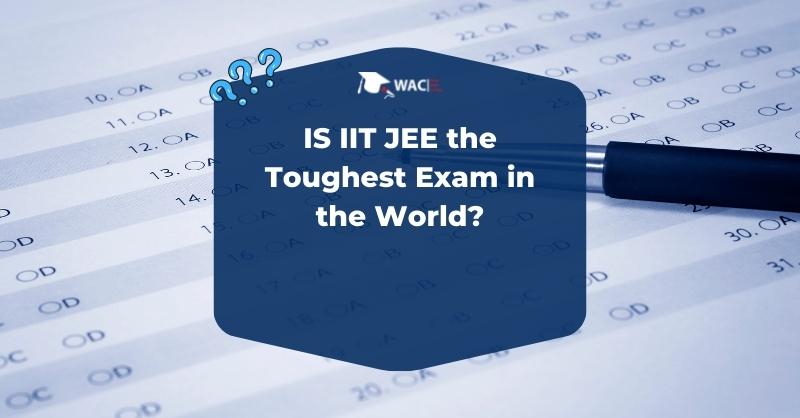Is IIT JEE the Toughest Exam in the World? JEE, which stands for the Indian Institutes of Technology Joint Entrance Exam, can be considered one of the toughest exams in the world, if not the toughest. The exam was introduced in 2013 and is designed to give admission to candidates to all the 23 IITs. It can be considered the hardest engineering entrance exam, both in terms of how tough the problems are and how low the acceptance rate is. It is the second toughest exam in India, second only to UPSC CSE (Union Public Services Commission Civil Service Exams).
The acceptance rate for all the IITs is less than 1%. In 2021, more than 10 Lakh students applied for JEE Mains and there are only 16,234 seats for undergraduate programs in all IITs. This proves that IIT JEE is the toughest and most incredibly competitive exam in the world. The acceptance rate is less than colleges like Harvard, Yale, etc. Millions of aspirants dream to get admission into IIT but only a handsome of those can do so.
The syllabus is also vast. It crosses three subjects – Physics, Chemistry, and Maths and up to 4 years of studying. The exam is of two levels – JEE Main and JEE Advanced. JEE Main is an objective-type paper that lasts for three hours and 30 minutes. In JEE Mains, only 250,000 people qualify for the next level. JEE Advanced is even harder than JEE Mains. It consists of 2 papers, each with a time limit of three hours. It is also an objective type test. Out of the 250,000 candidates, about 16,000 will be accepted into the IIT.
But even with competition this high, and exam this tough, the number of IIT aspirants continue to rise with each passing year. Why? Because every IIT pass-out is guaranteed a rosy future. They get employed in many reputed organizations both in India and abroad and are admitted for further studies in the most prestigious universities worldwide. Due to the demand for a seat in IIT being this high, examiners are forced to raise the degree of complexity of the paper each year. Hence, there is a correlation between the number of candidates and the exam’s difficulty level.

